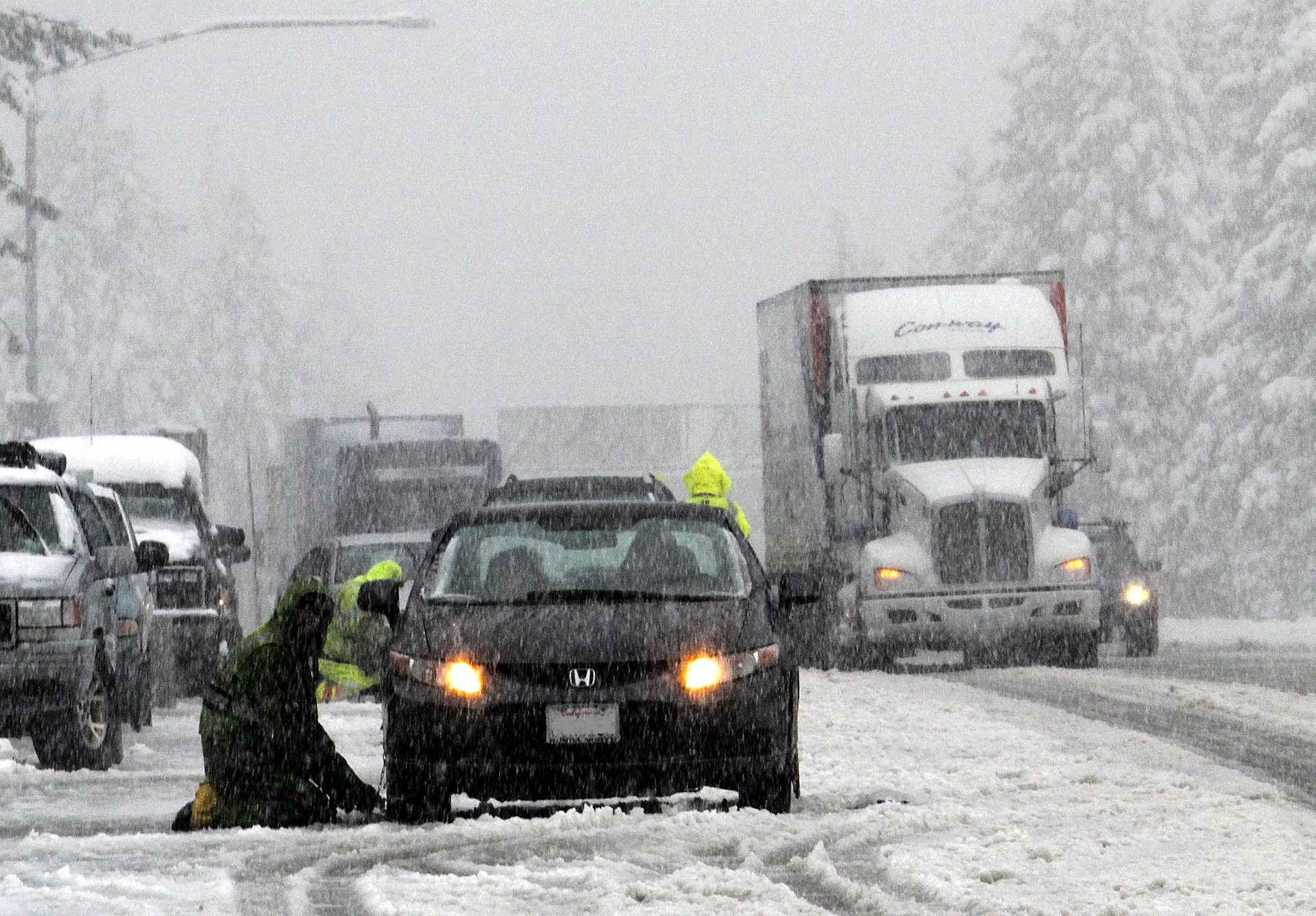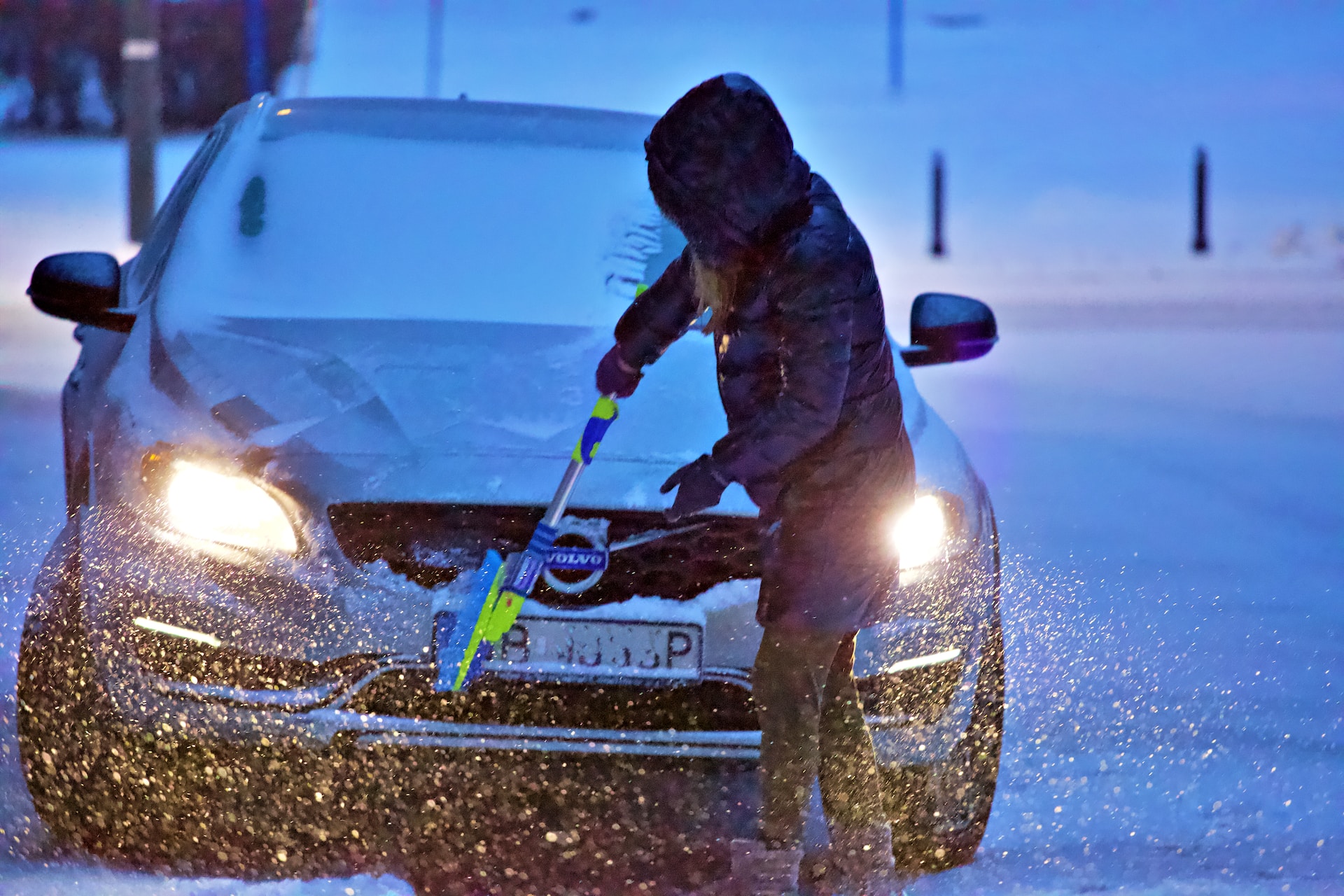
Like it or not, winter is here.
It's time to ensure your fleet is equipped for challenging driving conditions. To help you, we’ve created this 10-step fleet safety checklist. We'll cover how to prepare your fleet for cold weather so drivers feel safer and get where they need to go quicker.
10 ESSENTIAL TIPS FOR SAFE WINTER DRIVING
1. Check each vehicle’s tires
Make sure you equip each of your vehicles with the right tires for winter conditions. Fleets that operate in heavy snow and ice should have winter tires stamped with the three-peak mountain snowflake symbol.
This indicates the tire is suitable for severe conditions. For fleets that operate in milder conditions, all-weather tires are an excellent option. All-weathers stay pliable to -25 degrees. They’re suitable for slush, light snow, rain, and cold, dry pavement.
(Note: Some jurisdictions mandate the type of tires that need to be mounted on the vehicles, so make sure you comply with the law in your area.)
Ensure drivers check their vehicle’s tire pressure regularly. Did you know that, for every 10 degrees of temperature drop, tire pressure will drop by one-to-two pounds?
Tire pressure must stay within 30-35 PSI to maintain traction and safe handling. (Check each vehicle’s owners manual specific requirements.)
Pro tip: Keep tire chains or snow cables in your trunk in case you encounter extremely icy conditions.
2. Put together in-vehicle emergency kits
Ensure all vehicles have essential emergency items in the trunk so drivers are prepared for any circumstance. Each kit should include:
- Blanket
- Proper attire
- Boots
- Jacket
- Hat and gloves
- Shovel
- Flashlight
- Snacks
- Water
- Bag of sand or cat litter (which can provide added traction if a driver get stuck in the snow)
- Candle and matches
3. Get batteries tested
Freezing temperatures slow the chemical reactions that occur in a vehicle’s battery. As a result, battery power drops significantly in the winter. To ensure drivers have enough “juice” while they’re out on their routes, get your batteries tested now. Replace any old or weak batteries or make system repairs where needed.

4. Check your fleet’s cooling systems
It may sound strange to check your vehicle’s cooling systems in cold weather. But these systems keep engines operating within the correct temperature range—year-round. Having the wrong coolant, which could actually freeze, causes significant maintenance issues, so make sure the one you choose is temperature-appropriate.
Coolant also helps keep the passenger compartment’s heater operating properly—essential for the winter months. It also makes a lot of sense to switch to a winter-grade oil that performs better in cold weather.
You can get a mechanic to check your systems for you or work with a fleet management company to take care of all maintenance for your fleet.
Fleets on the maintenance program here at Foss National Leasing benefit from scheduled maintenance year-round. So they don’t have to worry about a system breaking down in the middle of winter.
5. Use winterized wiper fluid
We recommend stocking up on windshield wiper fluid that has an antifreeze component. Not only will drivers be able to clean dirt and smears, but this will also ensure each vehicle’s sprayer doesn’t freeze up, crack, or apply a layer of fluid that turns to ice on the windshield.
Don’t forget to replace worn wiper blades with new ones that can effectively clear snow and ice.
6. Keep fuel tanks at least 50% full
The last thing you want is for a driver to get stranded in dangerous conditions. So encourage them always to keep their fuel level above half a tank. If drivers do find themselves stranded, instruct them not to leave the car unless nearby shelter is available. Here at Foss National, our fuel card programs come with 24/7 roadside assistance. Perfect for keeping drivers safe in all road conditions.
.jpg?width=1920&height=1280&name=pexels-david-guerrero-15811736%20(1).jpg)
7. Plan routes using telematics and GPS
Unpredictable road situations become more common in winter. Accidents, road closures, and bumper-to-bumper traffic can all contribute to late or missed appointments.
Consider a telematics GPS system, which maps the exact location of each fleet vehicle, monitors traffic patterns, and identifies the most optimal routes for drivers. By avoiding congested or dangerous routes, they're less likely to run late.
(Learn more in How Fleet Telematics Tracking Keeps Drivers Safe in Winter.)
8. Remove snow and ice from vehicles
Ensure each vehicle has a foam brush or non-abrasive snow broom that drivers can use to brush snow away. Instruct drivers to allow time to remove snow and ice from their vehicles and provide them with a simple list of steps:
- Remove all snow from the tailpipe to prevent blockage
- Turn on the front and rear defrosters
- Start by clearing snow from the top of the vehicle and work your way down, doing the windshield last
- Ensure headlights and taillights are clean and working
- Clear and dry wiper blades and ensure the wiper nozzles are clear
- Remove frost and ice, avoiding using hot water or a screwdriver

9. Keep windows clear of fog
Foggy windows cause major visibility problems in cold or wet weather. Ensure your car's heater and defroster are working correctly to maintain clear visibility. Running the heat and the air conditioner at the same time with fresh (not recirculated) air will defog windows fast. But this can be uncomfortable for drivers in the middle of winter.
Another solution is to encourage drivers to start their vehicles 10-15 minutes in advance of driving. During that time, they can run the heat defroster on full blast, which will work to defog windows.
A final option is to provide drivers with anti-fog spray. This will help prevent the windows from fogging up in the first place.
10. Get your vehicles washed often
Road salt, snow, and moisture can cause rust on a car, which ages the vehicle’s body prematurely. Ensure vehicles get to the car wash regularly so they stay looking great for longer.
Conclusion
- Winter on the road can be a tough one for your vehicles and drivers. With our checklist in hand, your drivers will feel safer and more confident on snowy, icy roads
- your vehicles will be more equipped to withstand freezing temperatures.
In the end, a safe, productive driver and a well-operating vehicle can take your fleet a long way.
Get to Know the Author
Danny is an Eastern Region Account Manager with over 30 years of fleet management experience. He takes pride in identifying opportunities to reduce his clients’ costs by optimizing their operations.
He continuously looks for non-traditional ways to improve his clients’ experiences and ensure their drivers are safe and proud to be driving a Foss vehicle. He’s highly regarded in the industry due to his drive and passion for building partnerships with his clients.
Outside of the office, Danny enjoys coaching minor hockey and spending time with his family and dog, Daisy.
Meet our team




.jpeg)


